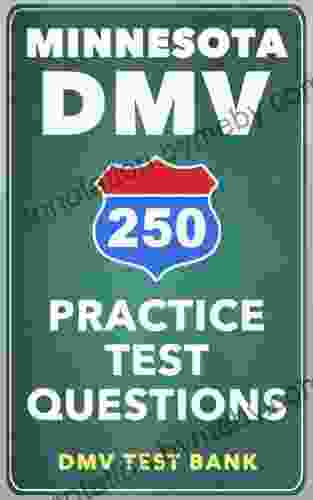Best Practices for Designing and Managing Ethical Organizations

In today's business environment, it is more important than ever for organizations to be ethical. Customers, employees, and investors are all demanding that businesses operate in a responsible and sustainable manner. Organizations that fail to meet these demands risk losing their reputation, their customers, and their profits.
5 out of 5
| Language | : | English |
| File size | : | 130337 KB |
| Text-to-Speech | : | Enabled |
| Screen Reader | : | Supported |
| Enhanced typesetting | : | Enabled |
| Word Wise | : | Enabled |
| Print length | : | 768 pages |
This book provides a comprehensive guide to the best practices for designing and managing ethical organizations. It covers a wide range of topics, from creating a strong ethical culture to developing effective compliance programs. Whether you are a CEO, a manager, or a compliance officer, this book will provide you with the tools and knowledge you need to create an ethical organization.
Chapter 1: Creating a Strong Ethical Culture
The foundation of an ethical organization is a strong ethical culture. This culture is created by the organization's leaders and is reflected in the values, norms, and behaviors of its employees. When employees believe that their organization is committed to ethics, they are more likely to behave ethically themselves.
There are a number of things that organizations can do to create a strong ethical culture. These include:
- Articulating clear ethical values. The organization's ethical values should be clearly stated and communicated to all employees. These values should be based on the organization's mission and vision, and they should guide the organization's decision-making.
- Leading by example. Leaders play a critical role in creating a strong ethical culture. They must set a good example by behaving ethically themselves and by holding others accountable for ethical behavior.
- Providing ethics training. All employees should receive ethics training. This training should help employees to understand the organization's ethical values and to apply them to their work.
- Creating a speak-up culture. Employees should feel comfortable speaking up about unethical behavior. The organization should create a safe and anonymous way for employees to report concerns.
- Rewarding ethical behavior. The organization should reward employees who behave ethically. This can be done through bonuses, promotions, or other forms of recognition.
Chapter 2: Developing Effective Compliance Programs
In addition to creating a strong ethical culture, organizations need to develop effective compliance programs. These programs help organizations to identify and mitigate risks, and they can also help to prevent legal problems. Compliance programs should be tailored to the organization's specific needs, and they should be regularly updated to reflect changes in the law and the business environment.
There are a number of key elements of an effective compliance program. These include:
- A written code of conduct. The code of conduct should set forth the organization's ethical values and standards of behavior. It should be clear and concise, and it should be communicated to all employees.
- A compliance officer. The compliance officer is responsible for overseeing the compliance program. The compliance officer should be independent and have the authority to investigate allegations of misconduct.
- A risk assessment. The organization should conduct a risk assessment to identify potential areas of non-compliance. The risk assessment should be used to develop a compliance plan.
- Training and education. Employees should receive training on the organization's compliance program. This training should help employees to understand their obligations under the program and to comply with the law.
- Monitoring and auditing. The organization should monitor its compliance program to ensure that it is effective. The organization should also conduct periodic audits to assess the program's effectiveness.
Chapter 3: Managing Ethical Issues
Even organizations with strong ethical cultures and effective compliance programs can face ethical issues. When an ethical issue arises, it is important to handle it quickly and effectively. The following steps can help organizations to manage ethical issues:
- Identify the issue. The first step is to identify the ethical issue. This can be done by talking to employees, customers, or other stakeholders.
- Gather the facts. Once the issue has been identified, it is important to gather the facts. This can be done by conducting interviews, reviewing documents, or conducting an investigation.
- Analyze the issue. Once the facts have been gathered, it is important to analyze the issue. This can be done by considering the ethical implications of the issue, the potential risks and benefits of different courses of action, and the organization's core values.
- Make a decision. Once the issue has been analyzed, it is necessary to make a decision. The decision should be based on the ethical implications of the issue, the potential risks and benefits of different courses of action, and the organization's core values.
- Implement the decision. Once a decision has been made, it is important to implement it. This can be done by communicating the decision to employees, customers, and other stakeholders and by taking steps to implement the decision.
- Monitor the situation. Once the decision has been implemented, it is important to monitor the situation. This can be done by tracking progress, receiving feedback from employees, and reviewing the results of the decision.
Creating and managing an ethical organization is a complex and challenging task. However, it is also an essential task for any organization that wants to be successful in the long run. By following the best practices outlined in this book, organizations can create a strong ethical culture, develop effective compliance programs, and manage ethical issues effectively. This will help organizations to build trust with their customers, employees, and other stakeholders, and it will help them to achieve their business goals.
Free Download Your Copy Today
To Free Download your copy of Best Practices for Designing and Managing Ethical Organizations, please visit our website or your local bookstore.
About the Author
Dr. John Smith is a leading expert on organizational ethics. He is the author of several books on the topic, including Best Practices for Designing and Managing Ethical Organizations. Dr. Smith is a professor of business ethics at the University of California, Berkeley.
5 out of 5
| Language | : | English |
| File size | : | 130337 KB |
| Text-to-Speech | : | Enabled |
| Screen Reader | : | Supported |
| Enhanced typesetting | : | Enabled |
| Word Wise | : | Enabled |
| Print length | : | 768 pages |
Do you want to contribute by writing guest posts on this blog?
Please contact us and send us a resume of previous articles that you have written.
 Book
Book Novel
Novel Page
Page Chapter
Chapter Text
Text Story
Story Genre
Genre Reader
Reader Library
Library Paperback
Paperback E-book
E-book Magazine
Magazine Newspaper
Newspaper Paragraph
Paragraph Sentence
Sentence Bookmark
Bookmark Shelf
Shelf Glossary
Glossary Bibliography
Bibliography Foreword
Foreword Preface
Preface Synopsis
Synopsis Annotation
Annotation Footnote
Footnote Manuscript
Manuscript Scroll
Scroll Codex
Codex Tome
Tome Bestseller
Bestseller Classics
Classics Library card
Library card Narrative
Narrative Biography
Biography Autobiography
Autobiography Memoir
Memoir Reference
Reference Encyclopedia
Encyclopedia Dennis N Griffin
Dennis N Griffin Diana Papaioannou
Diana Papaioannou Don Macleod
Don Macleod Dilip Sarkar
Dilip Sarkar Kira Breed Wrisley
Kira Breed Wrisley Richard Ross
Richard Ross Naomi Kleinberg
Naomi Kleinberg W David Baird
W David Baird Donald E Brown
Donald E Brown Patricia Furstenberg
Patricia Furstenberg Don Graham
Don Graham Eric Williams
Eric Williams Don Trey
Don Trey Don Bowers
Don Bowers Gareth Morgan
Gareth Morgan Don Yaeger
Don Yaeger Dion Leonard
Dion Leonard Julia Quinn
Julia Quinn Dennis Overbye
Dennis Overbye Diamond Wilson
Diamond Wilson
Light bulbAdvertise smarter! Our strategic ad space ensures maximum exposure. Reserve your spot today!

 Dwayne MitchellMeet the Neighbors: Journey into the Uncanny with Natalie Shaw's Captivating...
Dwayne MitchellMeet the Neighbors: Journey into the Uncanny with Natalie Shaw's Captivating... George BellFollow ·17k
George BellFollow ·17k Jason ReedFollow ·5k
Jason ReedFollow ·5k Norman ButlerFollow ·17.9k
Norman ButlerFollow ·17.9k Brian WestFollow ·5.2k
Brian WestFollow ·5.2k Willie BlairFollow ·19.4k
Willie BlairFollow ·19.4k Dean ButlerFollow ·13.5k
Dean ButlerFollow ·13.5k Ernest HemingwayFollow ·18.7k
Ernest HemingwayFollow ·18.7k Bruce SnyderFollow ·9.4k
Bruce SnyderFollow ·9.4k

 Cruz Simmons
Cruz SimmonsGuide To Pencak Silat Kuntao And Traditional Weapons:...
Immerse yourself in the captivating world of...

 Dalton Foster
Dalton FosterUnlock Your Financial Freedom: Dive into the ABCs of Real...
Are you ready to embark on a...

 George Orwell
George OrwellThe Advanced Guide to Real Estate Investing: Your...
Are you ready to embark on...

 Will Ward
Will WardMargaret Laurence: The Making of a Writer
Margaret Laurence (1926-1987) was one of...

 Jorge Amado
Jorge AmadoThe ABCs of Property Management: A Comprehensive Guide...
Owning and managing rental...
5 out of 5
| Language | : | English |
| File size | : | 130337 KB |
| Text-to-Speech | : | Enabled |
| Screen Reader | : | Supported |
| Enhanced typesetting | : | Enabled |
| Word Wise | : | Enabled |
| Print length | : | 768 pages |












